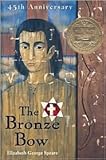The World's First Flower Probably Looked Like The Modern-Day Magnolia
Language
Reading Level
Listen to Article

Scientists have long known that the world’s first flower bloomed between 250 million and 140 million years ago, during the Cretaceous period when dinosaurs dominated the earth. The single mutation was so successful that flowering plants, or Angiosperms, now make up almost 90% of all plant species, far outnumbering seed plants like conifers, that appeared on earth much earlier, between 350 million and 310 million years ago. The emergence of flowers not only made the world more beautiful and vibrant but also led to the evolution of bees and other pollinating insects. Hence, it is important to understand how they may have evolved over the years.
However, while we know a lot about the appearance of dinosaurs, which have been extinct for over 65 million years, very little is known about the first blossom. That’s because flowers are delicate structures and rarely fossilize. The earliest known preserved plant remains, that of the aquatic Montsechia vidalii, dates back about 130 million years — at least 10 million years after the first flower bloomed.
Since going backward in time is not an option, Hervé Sauquet, an evolutionary biologist at the Paris-Sud University, decided to study the characteristics of the over 800 descendants of the original flower that are around today. To accomplish this gargantuan mission, Sauquet established the eFlower project and asked experts across the world to input data from scientific papers about the structure of modern flowers, including details like the layout of their petals. Once the data had been amassed, the researcher and his team tried to determine how flower shapes and structures might have changed over time by testing millions of possible configurations.

The first flower, as depicted by Sauquet and his team, closely resembled a magnolia or water lily. Similar to its modern-day counterparts, it had both male stamens and female carpels, allowing for easy self-pollination. The study, published in Nature Communications on Aug 1, also suggests that the first flower comprised multiple petals arranged in concentric circles, or “whorls,” around the center. This contradicts the widely-believed theory that ancient flowers had spiraled petals that later evolved to the whorled structures of today.
"These results call into question much of what has been thought and taught previously about floral evolution! It has long been assumed that the ancestral flower had all organs arranged in a spiral." said the co-author of the study, Professor Juerg Schoenenberger from the University of Vienna.

The researchers also assert that early flowers had more whorls. They believe shedding the extra petals probably helped flowers rapidly diversify to the over 400,000 different species that we enjoy today. It also enabled flowers to evolve to conduct complex tasks like pollination by specific insects as is the case with orchids, or producing the simple blossoms found in sunflowers.
Though the mystery of how the first flower looked may have been solved, researchers still have no answer to the bigger question — How did the first flower form? To answer that, they will first have to find the remains of one that inhabited Earth 250 to 140 million years ago, which may be hard to do!
Resources: sciencemag.com, scientificamerican.com, the verge.com, Sauquet, H. et al. The ancestral flower of angiosperms and its early diversification. Nat. Commun. 8, 16047 doi: 10.1038/ncomms16047 (2017).
Cite Article
Learn Keywords in this Article
179 Comments
- best_of_todayover 2 yearsthats cool
- skornalmost 3 yearscute
- adroit_avimimusalmost 3 yearsThat is so cool! A lot of the flowers in prehistoric times must've been bright and pretty to attract pollinators such as bugs and creatures with fur!
- unknown_user14over 3 yearsFlowers are so beautiful and they balance our lives!
- x_goddess_xalmost 4 yearsIt's really pretty. Follow me if you agree
- tulip_kittyabout 4 yearsI like flowers. 🌸
- flameheartedover 4 yearsWow! I love this fact! WOW
- cr4td4lover 4 yearsI love this fact! New thing to add to my list of newly discovered things!
- flameheartedover 4 yearsYes, the_wolf! I love this fact too!
- 4graderabout 6 yearsI love the video
- slytherinfanover 6 yearsMagnolias are my favorite type of flower! What a coincidence :)




